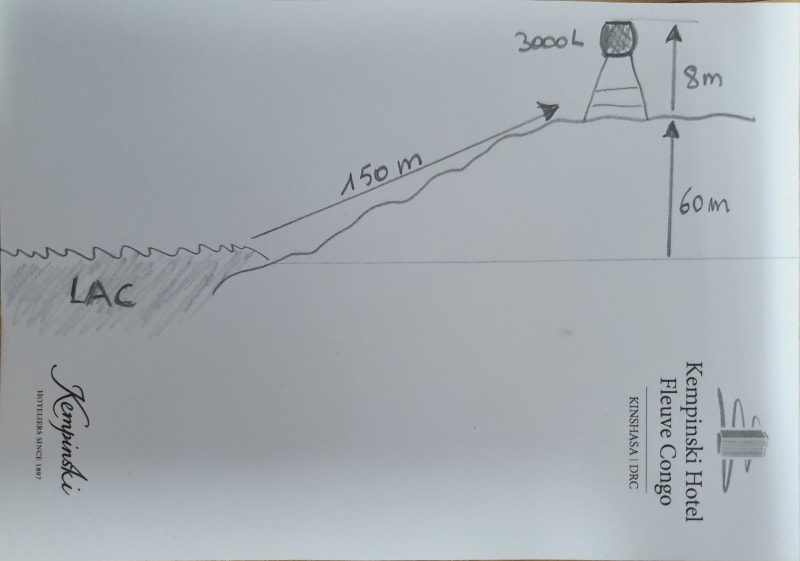congoRiver
Agricultural
- Oct 30, 2019
- 4
Hello All
I am pretty new in a project that we have started in Congo (DRC).
We want to bring water from the lake (lac in French) to the water tower we installed uphill (3000 Liters Cistern).
height water tower = 8 meters above 'ground'
distance lake to 'ground' = 150 meters
height lake to 'ground' = 60 meters
attached you will find a small visual illustration of the situation.
Ideally, we would like to work with solar power. The GPM/LPH is not really important if we can fill in the cistern in approx. 4 hours-time a day.
What pump would you recommend us to get? /Is there a good solar pump or system we can find ?
Thanks in advance for the help!

I am pretty new in a project that we have started in Congo (DRC).
We want to bring water from the lake (lac in French) to the water tower we installed uphill (3000 Liters Cistern).
height water tower = 8 meters above 'ground'
distance lake to 'ground' = 150 meters
height lake to 'ground' = 60 meters
attached you will find a small visual illustration of the situation.
Ideally, we would like to work with solar power. The GPM/LPH is not really important if we can fill in the cistern in approx. 4 hours-time a day.
What pump would you recommend us to get? /Is there a good solar pump or system we can find ?
Thanks in advance for the help!

